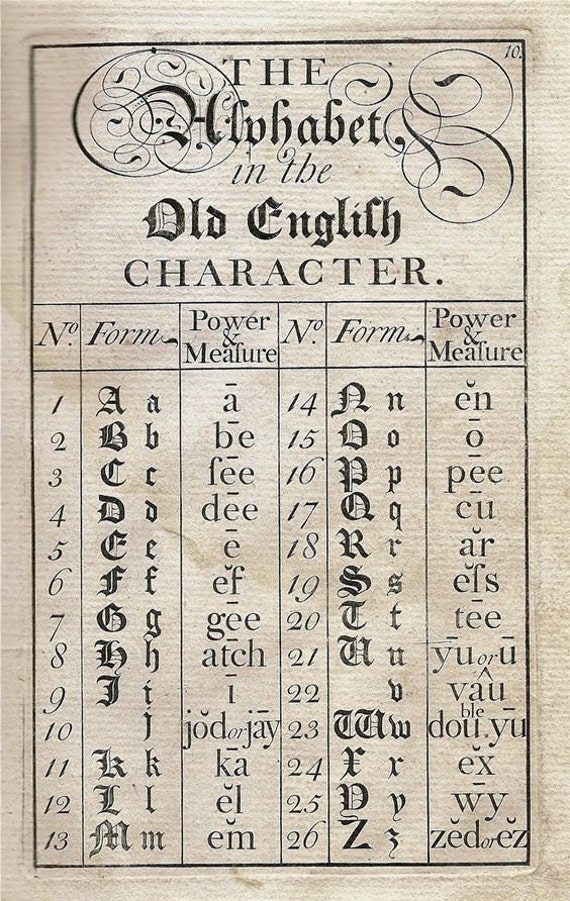

Swa sceal geong guma gode gewyrcean, fromum feohgiftumon fæder bearme. HWÆT, WE GAR-DEna in geardagum, þeodcyninga þrym gefrunon, hu ða æþelingas ellen fremedon! oft Scyld Scefing sceaþena þreatum, monegum mægþum meodosetla ofteah, egsode eorlas, syððanærest wearð feasceaft funden he þæs frofre gebad, weox under wolcnum weorðmyndum þah, oð þæt him æghwylc ymbsittendra ofer hronrade hyran scolde, gomban gyldan þæt wæs god cyning! Ðæm eafera wæs æfter cenned geong in geardum, þone God sende folce to frofre fyrenðearfe ongeat, þe hie ær drugon aldorlease lange hwile him þæs Liffrea, wuldres Wealdend woroldare forgeaf, Beowulf wæs breme - blæd wide sprang- Scyldes eafera Scedelandum in. The ampersand and five uniquely English letters, designated ond, wynn, thorn, eth and ash, were included.Īs far from Modern English as Public Enemy, Old English continues to be taught in high schools and colleges when our young people are forced to grapple with things like Beowulf( translated): By 1011, a formal list of the Old English alphabet was made and included all of our present letters except J, U (or V)* and W.

In the seventh century AD, the Latin alphabet introduced by Christian missionaries had begun to take hold. Flexible, new runes were routinely added such that, although it first appeared in England with 26 characters, by the time of its demise (by the 11 th century AD), it had 33. With ties to Scandinavia and other North Seas cultures, ancient Anglo-Saxon writing, called futhorc, was a runic language. The history of writing in Britain begins with the Anglo-Saxons in the fifth century AD. Although ancient Latin omitted G, J, V (or U)*, W, Y and Z, by about the third century, the Roman alphabet looked very similar to our modern English, containing every letter except J, U (or V)* and W. Considered the first true alphabet, it was later appropriated by the Latins (later to become the Romans) who combined it with notable Etruscan characters including the letters “F” and “S”. The Greeks built on the Phoenician alphabet by adding vowels sometime around 750 BC. Consisting of 22 letters, all consonants, this Semitic language became used throughout the Mediterranean, including in the Levant, the Iberian peninsula, North Africa and southern Europe. Scholars attribute its origin to a little known Proto-Sinatic, Semitic form of writing developed in Egypt between 18 BC.īuilding on this ancient foundation, the first widely used alphabet was developed by the Phoenicians about seven hundred years later. Often considered one of the more difficult languages to master thanks to the incredible amount of inconsistencies in the language, it should come as no surprise that the development of the modern English alphabet involved several languages, hundreds of years and a variety of conquers, missionaries and scholars.ĭating back nearly four thousand years, early alphabetic writing, as opposed to other early forms of writing like cuneiform (which employed the use of different wedge shapes) or hieroglyphics (which primarily used pictographic symbols), relied on simple lines to represent spoken sounds.


 0 kommentar(er)
0 kommentar(er)
